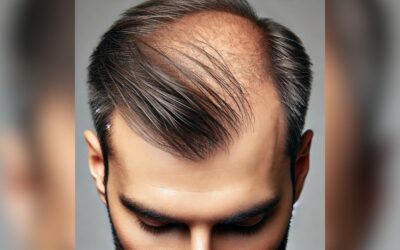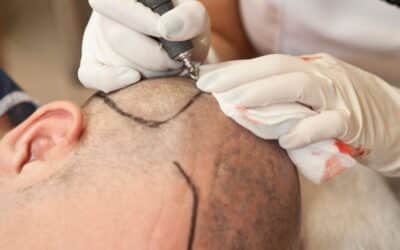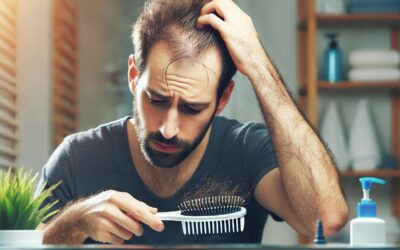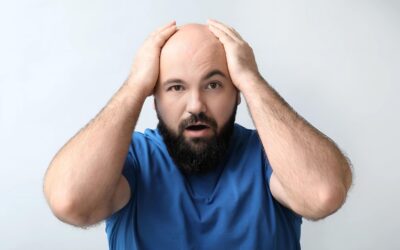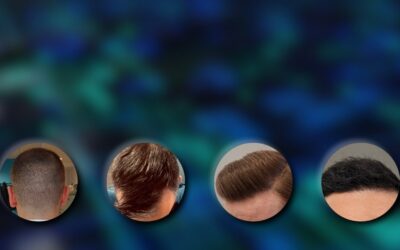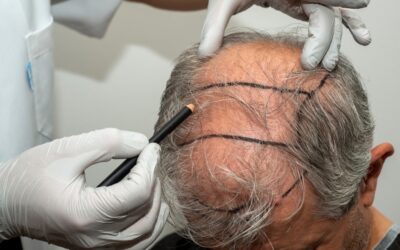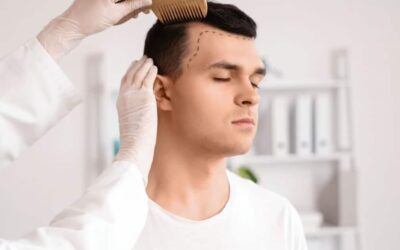Introduction
Are you looking for a permanent hair loss solution? To determine the best donor area for FUE graft transplants, it is essential to understand which areas on your scalp are most suitable for this procedure. It can be difficult to determine what qualifies as an ideal donor area and why some areas are better.
We discuss everything you need to know about finding the best donor area for FUE graft transplants. Also, how to qualify for an FUE Hair Transplant Procedure and prepare yourself before surgery. Finally, we discuss the cost associated with these procedures.
Table of Contents:
- Introduction
- What is FUE Hair Transplant?
- Best Donor Area for FUE Hair Graft Transplants
- Qualifying for an FUE Hair Transplant
- Preparing for an FUE Hair Transplant Procedure
- Cost of an FUE Hair Transplant Procedure
- FAQs in Relation to Best Donor Area FUE
- Conclusion
What is FUE Hair Transplant?
Follicular Unit Extraction (FUE) is a minimally invasive hair transplant method that has gained popularity due to its natural-looking results, shorter recovery time, and minimal scarring. This technique involves extracting individual hair follicles from a donor area and transplanting them into the bald or thinning areas of the scalp.
Process of Hair Transplant
The procedure takes 4-8 hours, but larger projects may require multiple sessions. The process involves the following steps:
- Individual hair follicles are extracted from a donor area, which can be any body part with healthy hair growth, such as the back or sides of the scalp, chest, or beard area.
- Small punches ranging in size from 0.6mm–1mm in diameter are used for extraction, causing minimal damage to surrounding tissue.
- The extracted follicles are transplanted into the bald or thinning areas on the recipient’s scalp.
Benefits of FUE Hair Transplant:

The benefits include:
- Minimally invasive: This method leaves no visible scarring as each follicle is removed individually rather than in large strips.
- Control over graft harvest: Greater control over the number of grafts harvested prevents over-harvesting and damage to the existing hairline.
Shorter recovery time: Fewer stitches and less trauma to surrounding tissues result in shorter recovery times.
Best Donor Area for FUE Hair Graft Transplants

The donor area plays a crucial role in FUE hair graft transplants. Factors such as skin type, scalp laxity, and color match between the donor and recipient areas must be considered.
Types of Donor Areas:
- Scalp Hairs: Traditional choice due to their similarity in texture and color to existing hairs. They offer a higher post-transplantation survival rate and blend seamlessly with existing hair.
- Body Hairs: These can provide longer-length or thicker hairs. However, they take longer to settle and may blend differently with existing scalp hairs.
Is this the best option for you?
When deciding which option is best for your individual needs during an FUE Hair Transplant procedure, it is important that you consult with your doctor regarding all available options. Together, you and your doctor can assess what would be the most suitable choice for you personally by factoring in all related elements including cost, end result desired, and resources available.
When choosing a donor area for FUE hair grafts, it is important to consider factors such as age, health, and lifestyle.
Qualifying for an FUE Hair Transplant
FUE hair transplants are a permanent solution for those suffering from hair loss or baldness. To determine if you’re eligible for an FUE transplant, your doctor will evaluate the amount of donor and recipient area available on your scalp.
Who Qualifies for an FUE Hair Transplant?
To qualify for an FUE hair transplant, patients must have:
- Candidates must possess sufficient healthy donor follicles to cover the transplant areas.
- Individuals with male-pattern baldness usually have ample donor follicles, primarily at the back and sides of their heads.
- The ideal candidate should maintain good overall health.
- Potential patients must be capable of adhering to pre-operative instructions.
Why Some People May Not Qualify for an FUE Hair Transplant
Patients who don’t have:
- Some patients may not have enough healthy hair follicles to provide for the transplant procedure. This lack of suitable follicles can limit the desired results and make them ineligible for surgery.
- Individuals suffering from certain medical conditions such as diabetes or lupus might be disqualified due to increased risk factors associated with these diseases.
- Smokers should quit smoking at least one month before any surgical procedure, including an FUE hair transplant. Nicotine can constrict blood vessels, potentially hindering post-surgery healing.
- Understanding the qualifications and requirements for an FUE Hair Transplant is crucial. Prospective patients must know pre-procedure instructions, post-procedure care, and recovery tips to ensure they’re suitable candidates.
Preparing for an FUE Hair Transplant Procedure

Preparing for an FUE (Follicular Unit Extraction) Hair Transplant Procedure requires careful consideration and adherence to specific guidelines to ensure a successful outcome. The following measures are designed to minimize risks and enhance the procedure’s effectiveness, from managing medications to lifestyle changes. Following these instructions closely will help set the stage for optimal healing and the best possible results.
| Preparing for an FUE Hair Transplant Procedure | Pre-Procedure Instructions and Guidelines |
| Medications and Supplements | Patients should stop taking any medications or supplements that may increase the risk of bleeding before their surgery date. |
| Smoking and Drinking | Refrain from smoking or drinking alcohol for at least two weeks before the procedure to reduce potential complications. |
| Physical Activity | Abstain from strenuous physical activity, such as exercise and heavy lifting, in the weeks leading up to the surgery to reduce post-operative swelling. |
| Pre-procedure Care | Follow all pre-procedure instructions and guidelines carefully to maximize results and ensure the best possible outcome. |
Cost of an FUE Hair Transplant Procedure
The expense of an FUE hair transplant can differ contingent on numerous components. For example, the number of grafts necessary, the area of the medical clinic, and any extra medicines that may be required.
The average cost of an FUE hair transplant procedure ranges between $6,000 to $15,000 USD. This price range is based on 1-3 thousand grafts used in a single session larger procedures with more than 3 thousand grafts will typically require multiple sessions and incur higher costs.
Location is another factor that affects the cost of an FUE hair transplant procedure. Prices may be more economical in locales such as India or Thailand, given the reduced labor expenses. However, medical tourism comes with risks. Additionally, some clinics offer discounts if you choose their services over others. It’s always worth shopping around before making your decision.
In conclusion, FUE hair transplants are a great option for restoring their hair. With the right donor area and preparation, you can achieve natural-looking results lasting for years. The best donor area of the scalp is typically at the back or sides. Here there is an abundance of healthy follicles with good genetic characteristics.
Although not everyone qualifies for this procedure due to certain types of hair loss, it’s worth exploring your options. Don’t forget that cost may be a factor when considering any transplant procedure. Make sure to do some research to learn about things to keep in mind about fue hair transplant procedures.
Look no further if you’re looking for the best donor area FUE hair transplant and restoration solutions. Schedule an appointment with our experienced team of professionals to help you find the perfect solution to achieve your desired results and answer all your questions about Hair Transplants.
FAQs in Relation to Best Donor Area FUE
Which donor area is best for a hair transplant?
The donor area for a hair transplant is the area of the scalp where healthy, permanent hairs are taken from. The most common donor areas are usually located in the back and sides of the head. Generally speaking, these areas have thicker and more robust follicles that can be used to provide natural-looking results after a hair transplant procedure. It is important to note that some patients may not have enough suitable donor hairs available on their scalps which could affect their ability to achieve desired results with a hair transplant procedure. In such cases, we may consider other areas.
Does FUE damage the donor area?
No, FUE (Follicular Unit Extraction) does not damage the donor area. This is because we extract individual follicles one at a time with precision and minimal trauma to the surrounding tissue. The process also leaves small circular scars which heal quickly and blend in with existing hair growth over time. Furthermore, FUE can be used to harvest grafts from areas of limited scalp laxity such as around the ears or on the back of your head without causing any noticeable scarring or permanent damage to these regions.
What is a weak donor area for a hair transplant?
A weak donor area for hair transplant is an area on the scalp with a low density of healthy, viable follicles. These areas are typically located at the back and sides of the head and may not provide enough grafts to produce satisfactory results. Hair transplants in these areas can be challenging due to their limited supply of donor hair. But experienced surgeons can still achieve successful outcomes through careful selection and placement techniques.
What is Cole’s safe donor area?
Cole’s safe donor area is the area on the back and sides of a person’s scalp. Here, hair follicles are genetically programmed to be resistant to balding. This region, which extends from ear level up towards the crown, contains denser concentrations of healthy follicles that can be harvested for transplantation into areas affected by pattern baldness or other forms of hair loss.
The use of Cole’s safe donor area ensures a successful outcome as these hairs have been proven to retain their characteristics after being transplanted elsewhere on the head.
The Best Donor Area FUE for You
In conclusion, FUE hair graft transplants are a great option for those looking to restore their hair. With the right donor area and preparation, you can achieve natural-looking results that will last for years. The best donor area of the scalp is typically at the back or sides. Here there is an abundance of healthy follicles with good genetic characteristics.
Although not everyone qualifies for this procedure due to certain types of hair loss, it’s worth exploring your options. Don’t forget that cost may be a factor when considering any type of transplant procedure. Make sure to do some research before committing to anything.
If you’re looking for the best donor area FUE hair transplant and restoration solutions, then look no further. Our experienced team of professionals will help you find the perfect solution to achieve your desired results.
Best Hair Transplant
1970 S. Prospect Ave., Suite 2
Redondo Beach, CA 90277
(213) 403-0455
https://www.google.com/maps?cid=9280610872186794918
To ensure your ease of mind, you can view our customer recommendations HERE. Furthermore, you can also see our Google reviews and Yelp reviews. We can’t wait to help you start restoring your lost hair.

